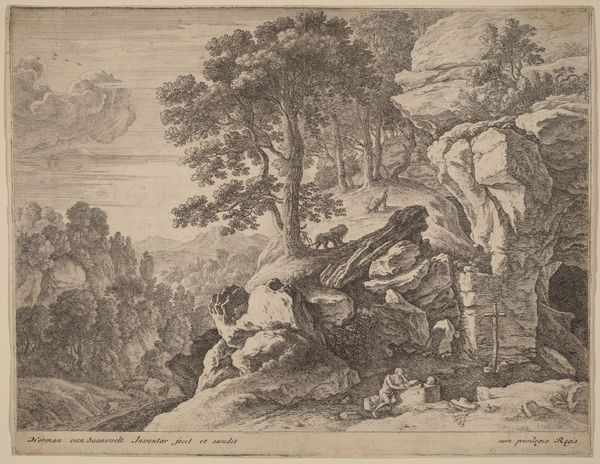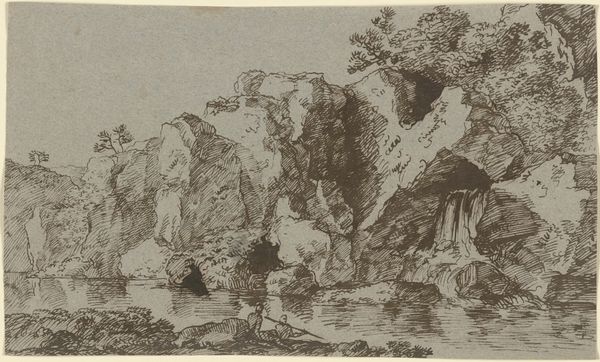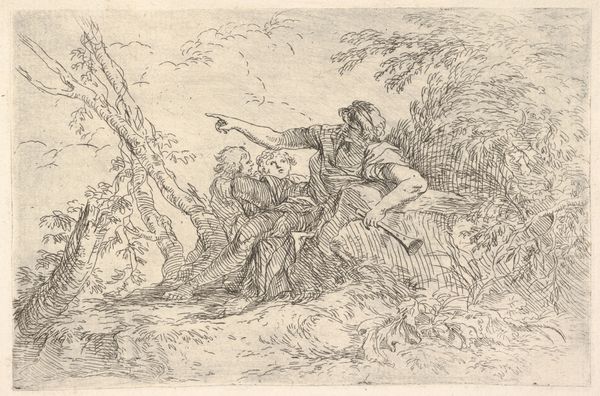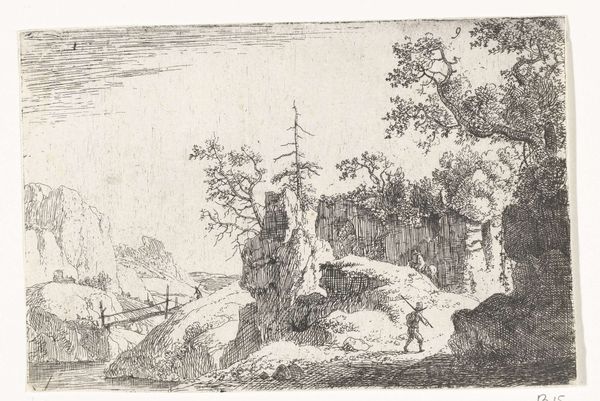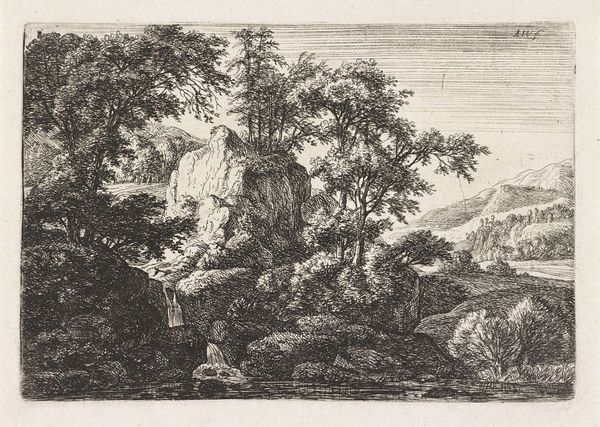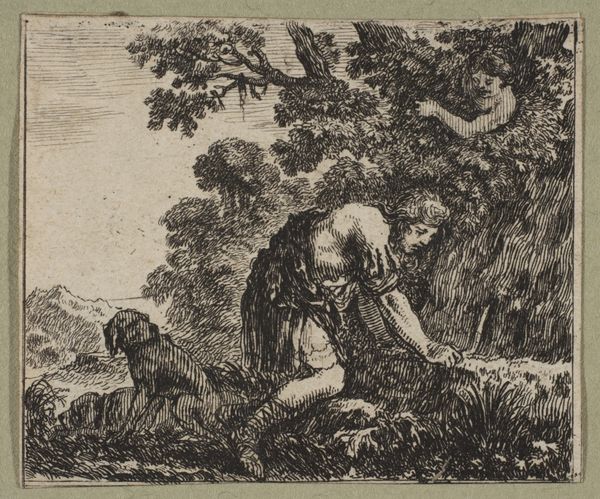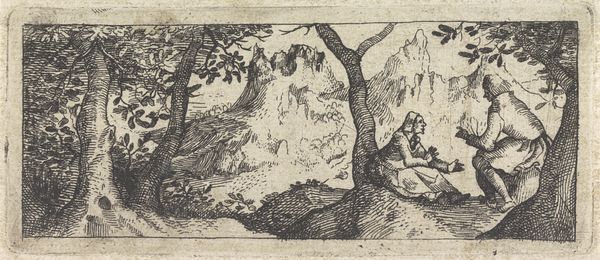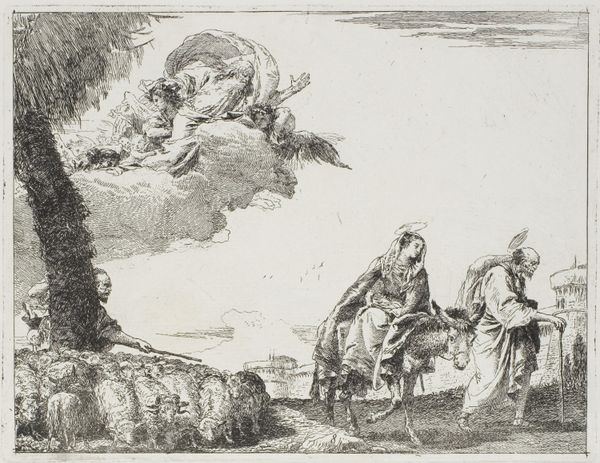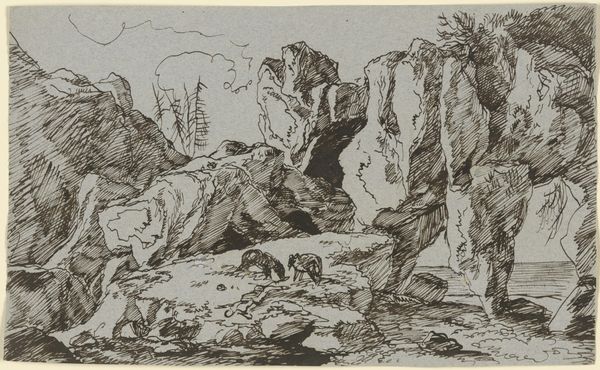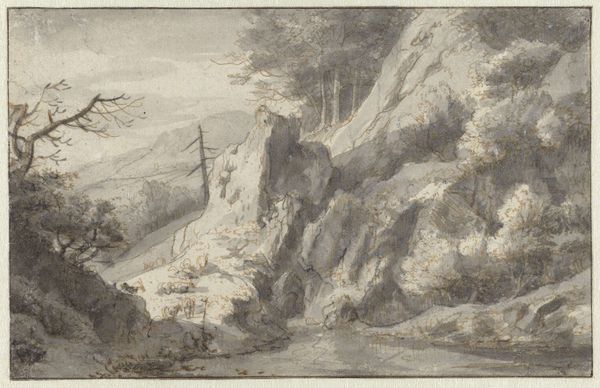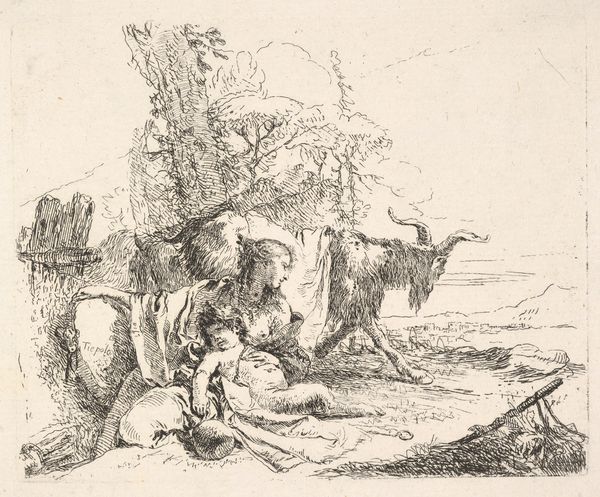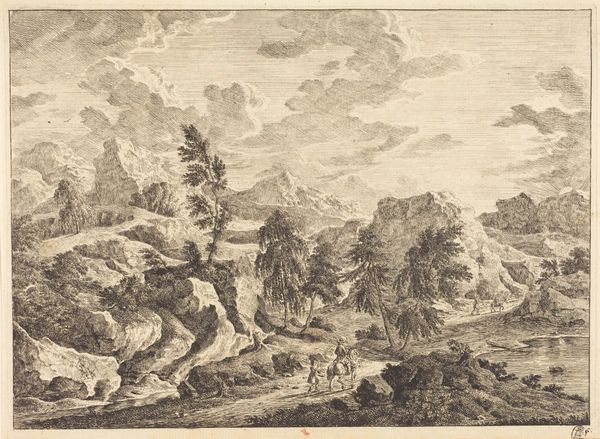
drawing, print, etching
#
drawing
#
baroque
# print
#
etching
#
landscape
#
etching
#
rock
#
line
Dimensions: height 59 mm, width 83 mm
Copyright: Rijks Museum: Open Domain
Curator: This is "Landscape with a Path along a Rock Formation", an etching and print made by Christian Wilhelm Ernst Dietrich, sometime between 1722 and 1774. It’s currently held here at the Rijksmuseum. Editor: It strikes me immediately as very…stark. Despite being a landscape, it feels almost like a portrait of this solitary rock. A sense of being alone with nature is definitely prominent. Curator: Landscape prints like this served various social functions back then. They catered to a growing middle class interested in experiencing nature through art, enabling them to appreciate idealized scenes even if they couldn't physically access such landscapes. Dietrich capitalized on this trend. Editor: Right, making nature, or at least the representation of it, more democratic, accessible beyond aristocratic travel. The composition itself – the winding path – it invites us into the scene, but the overwhelming presence of the rock formation also creates a sense of… restriction? We're invited, but under nature's terms, a constant negotiation between access and imposition. Curator: I agree, that path leads us nowhere. Prints like these also functioned as didactic tools. They disseminated aesthetic principles, shaping public taste by demonstrating artistic techniques like line work and perspective, even evoking specific emotional responses towards nature. It was also an inherently gendered context in how land ownership determined socio-economic hierarchies during that era. Editor: True, and this print, devoid of human figures, in a way, emphasizes this absence of social activity, reinforcing the idea of untouched, “pure” nature, implicitly linking to land ownership’s inherent exclusionary politics. The line work is indeed captivating – a lot of detail within the rock itself, making it quite imposing. Curator: Dietrich's success lay in skillfully emulating styles of established artists like Rembrandt and Salvator Rosa, attracting a wide audience seeking affordable art reflecting accepted aesthetic conventions. Consider how these seemingly neutral depictions of nature helped entrench certain cultural norms, framing the discourse surrounding land, beauty, and ownership. Editor: Exactly, the “untouched” ideal is often a fabricated construct. Now I find myself wondering who would purchase art like this, and what their socio-economic background might be? I want to know how the landscapes are implicated in larger projects that perpetuate colonial exploitation. The artist must have made choices about what or who to include and exclude. Curator: Well, the availability of archives and museum collections definitely gives the tools to discover further information along these lines! It encourages new critical avenues of exploration and questions the role and power of representation. Editor: Definitely, analyzing artwork always allows a closer scrutiny, creating space for deeper understandings that acknowledge both history and relevant modern conversations.
Comments
No comments
Be the first to comment and join the conversation on the ultimate creative platform.

